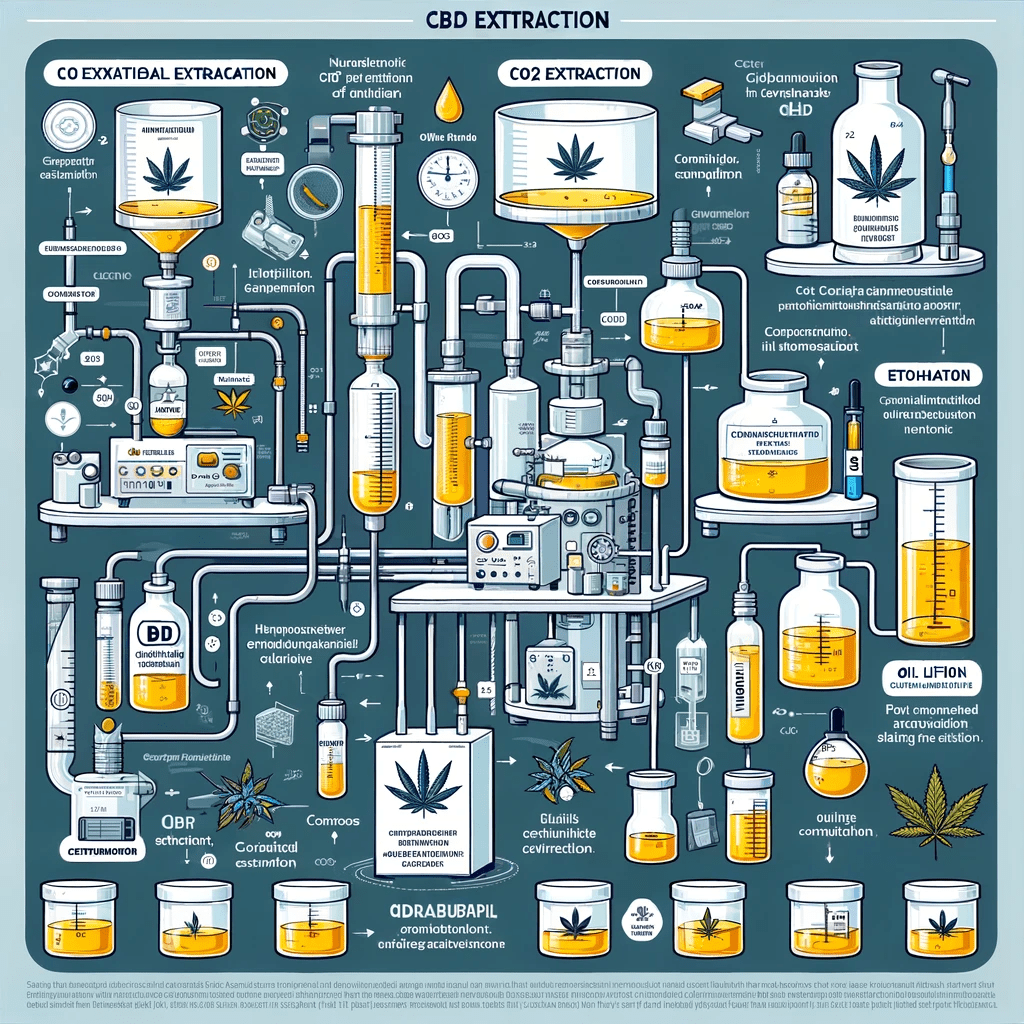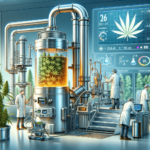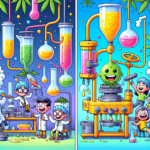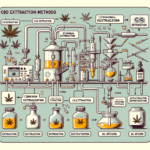Are you curious about the different methods used to extract CBD? Look no further. In this informative article, we will delve into the various techniques used to extract this beneficial compound from the hemp plant. Whether you’re a consumer looking for high-quality CBD products or a CBD business owner, understanding extraction methods is crucial to making informed decisions.
Key Takeaways:
1. CBD is a powerful compound derived from the hemp plant by Mother Nature, now found in various CBD products on the market.
2. The top two extraction methods for CBD are Supercritical CO2 extraction and Ethanol extraction, each with their own benefits and drawbacks.
3. When choosing an extraction method, factors such as quality control, hemp sourcing protocols, and a transparent view of the business’s commitment should be considered.
What is CBD?
CBD, short for cannabidiol, is a powerful compound derived from the hemp plant. It is a gift from mother nature, offering various potential health benefits. CBD Products, such as oils and creams, have gained popularity due to their potential therapeutic effects, contributing to many people’s cbd journey.
Fact: CBD may help alleviate symptoms of anxiety and depression.
More About Extraction Methods
- What Is Cannabis Derived Terpenes? What Do They Do?
- Understanding The Ethanol Extraction Method for CBD
- Solvent vs. Solventless CBD Extraction Methods
- Sustainable Eco Friendly CBD Extraction Processes
- Latest Advances in CBD Extraction Technology
- Comparative Analysis of CBD Oil Extraction Techniques
Why is CBD Extracted from Hemp?
CBD is extracted from the hemp plant due to its low THC content, making it legal and non-intoxicating. The extraction process typically involves using the flowers and plant material of the hemp plant to derive CBD oil from hemp biomass. This method ensures a high concentration of CBD without the psychoactive effects associated with THC.
When considering CBD extraction, it’s essential to prioritize the quality and purity of the hemp source. Opt for reputable manufacturers that employ sustainable practices and prioritize organic hemp cultivation.
What are the Different Extraction Methods for CBD?
CBD, or cannabidiol, has gained immense popularity in recent years for its potential health benefits. But how exactly is this compound extracted from the cannabis plant? In this section, we will discuss the top two extraction methods for CBD: supercritical CO2 extraction and ethanol extraction. We will also touch upon two other common methods: butane or propane extraction and olive oil extraction. By understanding these different techniques, we can gain a better understanding of the varying qualities and benefits of CBD products on the market. So, let’s dive into the world of CBD extraction methods and learn how manufacturers extract CBD from the natural plant.
1. Carbon Dioxide Extraction
- Preparation: Set up the extraction equipment and ensure it meets safety standards.
- Pre-treatment: Prepare the hemp material by grinding it to the desired consistency.
- Extraction: Introduce CO2 into a closed-loop extractor to pull out the cannabinoids and terpenes from the hemp using the chosen extraction process. The pressure and temperature are carefully controlled during this process.
- Separation: The CO2 and extracted compounds are separated, leaving behind a high-quality CBD extract.
- Purification: The extract goes through further refining processes to eliminate any impurities and achieve the desired quality of CBD.
A CBD manufacturer, dedicated to quality control, experimented with varying extraction methods to produce premium extracts, ultimately choosing CO2 extraction as their preferred extraction process for its superior results.
2. Ethanol Extraction
- Hemp sourcing protocols: Ensure the quality of the ethanol extraction by selecting hemp derived CBD from US farms following stringent protocols for cultivation and harvesting.
- Quality assurance tests: After the extraction process, conduct rigorous quality assurance tests to verify the purity and potency of the CBD extract.
- Certificates of analysis: Obtain and review certificates of analysis for the ethanol-extracted CBD, verifying its cannabinoid and terpene content as well as the absence of contaminants.
3. Butane or Propane Extraction
- Prepare the natural plant material: The first step is to place the hemp plant material into a holding tank.
- Run the chemical process: Next, butane or propane is used to extract the Hemp Oil and other cannabinoids from the plant material.
- Purify the extract: The extracted mixture is then heated to remove the solvent, leaving behind the Hemp Oil.
- Test for purity: The final step involves testing the Hemp Oil for any residual solvents to ensure it meets safety standards.
Considering the potential risks associated with the chemical process, it’s essential to prioritize safety and compliance when using butane or propane extraction methods for Hemp Oil.
4. Olive Oil Extraction
- Grind the cannabis plant to increase the surface area for extraction.
- Decarboxylate the ground cannabis in an oven to activate the cannabinoids.
- Infuse the decarboxylated cannabis with high-quality olive oil, or another chosen seed oil, to extract the cannabinoids and create cannabis oil.
- Heat the mixture at a low temperature for a specific duration to facilitate the infusion process.
For a potent and flavorful CBD extract, consider using high-quality olive oil as your chosen seed oil for the infusion process.
What are the Pros and Cons of Each Extraction Method?
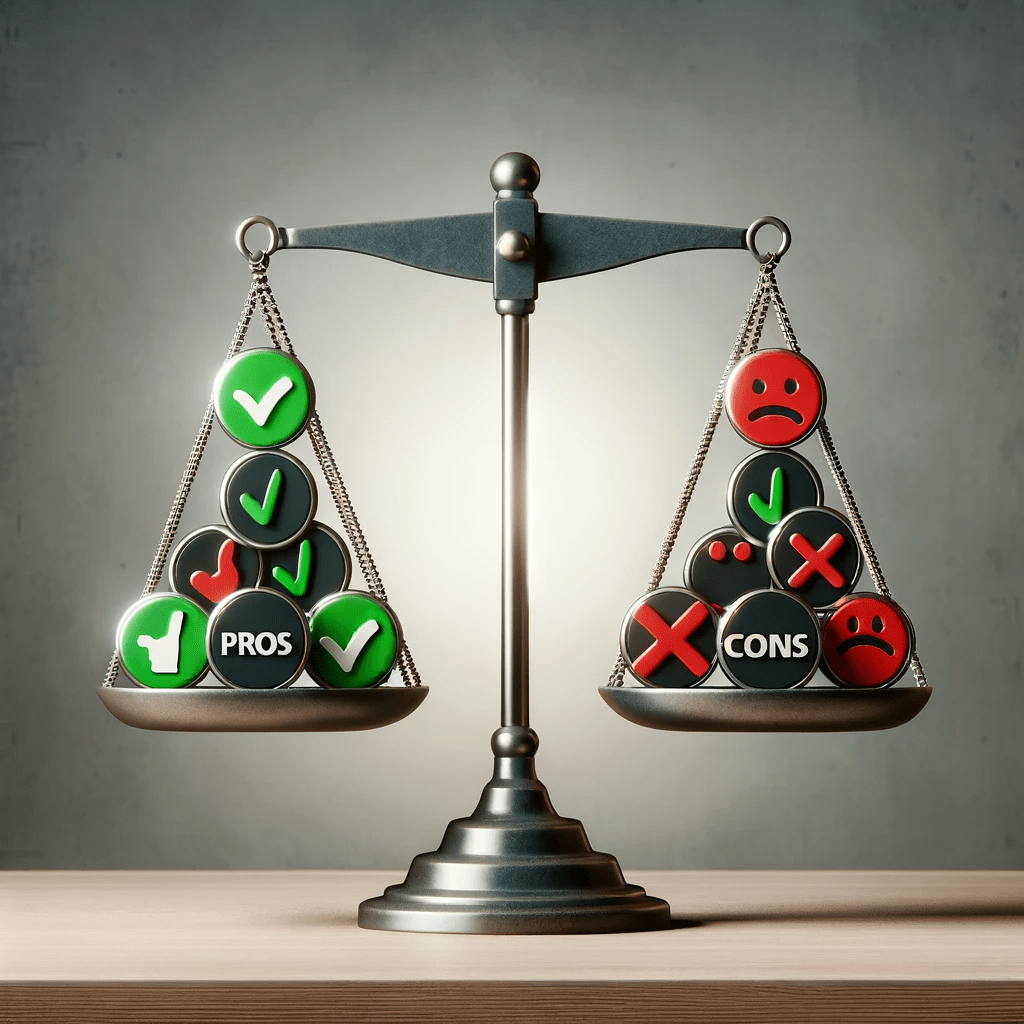
When it comes to extracting CBD from the cannabis plant, there are multiple methods that can be used. Each method has its own advantages and disadvantages, and it is important for businesses to have a transparent view of these techniques in order to ensure the quality control of their final product. In this section, we will discuss the pros and cons of four common extraction methods: carbon dioxide (CO2) extraction, ethanol extraction, butane or propane extraction, and olive oil extraction. By understanding the differences in these methods, businesses can make informed decisions on the best extraction process for their hemp-derived CBD products.
1. Carbon Dioxide Extraction
- To ensure quality control, start with high-quality hemp flowers for the extraction process.
- Extract CBD through carbon dioxide using varying pressures and temperatures.
- Obtain different qualities of CBD by separating the extracted oil from the CO2.
- For optimal purity, refine the extract through winterization and filtration processes.
- Ensure safe CBD products by conducting tests for residual solvents, pesticides, and heavy metals.
When considering the common ways to extract CBD, the carbon dioxide extraction process offers superior quality control and varying qualities for CBD products.
2. Ethanol Extraction
- Hemp sourcing protocols: Ensure compliance with US hemp-derived CBD regulations and sourcing guidelines.
- Quality assurance tests: Perform rigorous quality checks and testing procedures to ensure the purity and safety of the CBD extract.
- Certificates of analysis: Obtain and verify certificates of analysis to guarantee the potency and purity of the ethanol-extracted CBD from US hemp sources.
3. Butane or Propane Extraction
- Prepare the natural plant material: The first step involves loading the hemp plant material into a container that allows the solvent to pass through it.
- Extracting the CBD: The plant material is then soaked in either butane or propane, allowing the solvent to dissolve the CBD compounds.
- Evaporating the solvent: Through a chemical process, the solvent is evaporated, leaving behind the CBD extract mixed with a small amount of the solvent.
- Removing the residual solvent: The extract is then heated to remove any remaining solvent, resulting in pure CBD extract.
Fact: Butane or propane extraction is a common method for obtaining CBD extracts from hemp, often used in the production of Hemp Oil.
4. Olive Oil Extraction
- Prepare the cannabis: Decarboxylate the cannabis by heating it in an oven. Then, crush it into small pieces.
- Infuse the oil: Combine the crushed cannabis with high-quality olive oil and heat the mix in a double boiler for 1-2 hours.
- Strain the mixture: After cooling, strain the oil using cheesecloth to separate the plant material from the olive oil.
- Store the oil: Store the CBD-infused olive oil in a cool, dark place for future use.
For best results, always use a precise ratio of cannabis to oil and ensure the mixture is evenly heated when creating Cannabis Oil.
Which Extraction Method is the Best?
With the increasing popularity of CBD, the demand for high-quality extraction methods has also risen. However, with so many options available, it can be overwhelming to determine which method is truly the best. In this section, we will discuss the key factors that should be considered when choosing a CBD extraction method, including quality control, hemp sourcing protocols, and the business’s commitment to transparency and ethical practices. By understanding these factors, you can make an informed decision and ensure that the CBD products you use are of the highest quality.
What Factors Should be Considered When Choosing an Extraction Method?
When choosing a CBD extraction method, it is important to consider factors such as safety, efficiency, and purity of the end product.
Carbon dioxide (CO2) extraction is a highly controlled method with minimal environmental impact.
Ethanol extraction is a cost-effective option but requires careful monitoring for any impurities.
Butane or propane extraction is efficient but must be carried out with strict safety protocols.
Olive oil extraction offers a clear view of the process but may not be scalable.
It is crucial to assess a business’s commitment to quality through their hemp sourcing protocols and transparency in extraction practices.
A true story demonstrates the success of a CBD company’s dedication to quality control and ethical business practices, resulting in a partnership with a renowned health and wellness brand.
This highlights the importance of transparent and high-quality extraction methods in the industry.
What are the Uses of CBD Extracts?
CBD extracts have gained popularity in recent years as a natural remedy for various ailments. These extracts, derived from the cannabis plant, can be found in a variety of products such as oils, edibles, topicals, and more. In this section, we will discuss the uses of CBD extracts in different forms, including CBD oils, edibles, and topicals. We will also explore how quality control plays a crucial role in ensuring the mood-boosting effects of these products. So, let’s dive into the world of CBD and discover the potential benefits of these products.
1. CBD Oil
- Examine the source of the CBD oil to ensure it is derived from high-quality hemp plants.
- Check for third-party lab testing to validate the potency and purity of the CBD oil.
- Consider the intended use and dosage of the CBD oil to maximize its mood-boosting effects.
- Explore a variety of CBD products such as tinctures, capsules, or gummies to find the most suitable option for achieving mood-boosting effects.
2. CBD Edibles
- CBD gummies: These popular and convenient CBD-infused edibles come in various flavors and strengths, offering a discreet and tasty way to consume CBD while potentially providing mood-boosting effects.
- Chewable tablets: These easy-to-use tablets provide a precise dosage and undergo stringent quality control for consistent results, potentially offering mood-boosting effects.
When selecting CBD edibles, it is important to consider the product’s quality, accuracy of dosage, and potential mood-boosting effects. Be sure to choose reputable brands and consult with a healthcare professional for guidance.
3. CBD Topicals
- Identify the area for application and cleanse the skin to remove any dirt or oil.
- Take a small amount of CBD topical and apply it to the desired area.
- Gently massage the topical into the skin until fully absorbed.
- Wait for the CBD topical to take effect before covering the area.
- Reapply as needed based on the product’s instructions and individual response.
CBD topicals have been used for centuries for their potential pain-relieving, anti-inflammatory, and mood-boosting effects. Quality control and regulation have enhanced the safety and efficacy of modern CBD topical products.
FAQs about Cbd Extraction Methods
1. How does the CBD extraction process affect the quality of CBD products?
Different CBD extraction methods can result in varying qualities of CBD products. The two most common methods, ethanol extraction and supercritical CO2 extraction, are preferred by manufacturers for retaining quality control.
2. Can CBD be extracted from any part of the hemp plant?
No, CBD is primarily extracted from the hemp flowers. The rest of the plant material, known as hemp biomass, is typically used for other purposes.
3. What are the prerequisites for the CBD extraction process?
Before the extraction process, the CBD plant is typically picked, trimmed, dried, and finely ground. Depending on the extraction method, other prerequisites may also be required.
4. Is it important to source a CBD-rich plant for extraction?
Yes, it is important to source a CBD-rich plant for extraction in order to produce high-quality CBD products. Look for businesses that offer transparency in their hemp-sourcing protocols, such as 100% US hemp-derived CBD and quality assurance tests.
5. What is decarboxylation and why is it necessary for CBD extraction?
Decarboxylation is the process of heating hemp or cannabis to release cannabinoids, including CBD. It is necessary for CBD extraction because it is the only way to experience the mood-boosting effects of CBD.
6. What are the benefits of supercritical CO2 extraction for CBD?
Supercritical CO2 extraction is a clean, safe, and environmentally friendly method that has been the preferred method for extracting CBD for several decades. It is also used in the food industry and leaves little worry for manufacturers and consumers.

